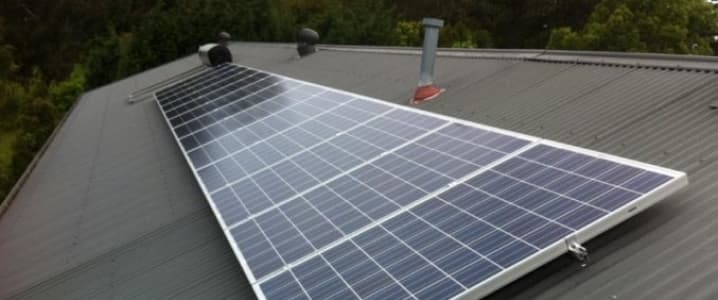The solar industry posted its best year on record in 2016, obliterating previous records by installing a smashing 14.6 gigawatts of new solar in the U.S. That is a 95 percent increase from the 7.4 GW installed in 2015, which happened to be the previous record.
It was the best year in the history of the U.S. solar business, according to new data from GTM Research and the Solar Energy Industries Association (SEIA). Even more impressive is the fact that with a cumulative installed capacity at just over 40 GW, roughly one third of all solar capacity ever installed was installed in 2016.
Of course, solar has been growing from a small base, and it still represents around 1 percent of total electricity generation. But what matters going forward is growth, and the 2016 figures point to a solid trend that suggests solar will dominate the future. In 2016, the 14.6 GW of solar installed accounted for 39 percent of the total electric generating capacity installed for the year, more than any other source of electricity. In other words, solar beat out wind, natural gas and coal in 2016, accounting for the most installed capacity for the year.
“What these numbers tell you is that the solar industry is a force to be reckoned with,” Abigail Ross Hopper, SEIA’s president and CEO, said in a statement. “Solar's economically-winning hand is generating strong growth across all market segments nationwide, leading to more than 260,000 Americans now employed in solar.” Related: Passing On The Permian: Has The Bubble Grown Too Big?
There is one big caveat in the eye-popping numbers. About three-quarters of the 14.6 GW installed came from utility-scale solar projects, some of which were planned on the expectation that a key federal tax credit was set to expire at the end of 2016. As it turned out, the U.S. Congress extended the 30 percent investment tax credit through 2019, but many of the utility-scale projects were already in the works before the extension. That led to an inflation of sorts in the volume of new solar projects that came online in 2016 as companies rushed to take advantage of what they thought was an expiring tax credit.
As a result, there will likely be a bit of a drop off in installations this year. However, a pause or slowdown in the pace of growth will not derail the broader trend towards clean energy that is very much underway. Solar is increasingly becoming cost-competitive with fossil fuels, depending on location. Moreover, employment is rising quickly, with jobs in the industry expanding by 25 percent last year.
In fact, one out of every 50 new jobs created in the U.S. in 2016 was in the solar industry. “These are well-paying, family sustaining jobs with low barriers to entry,” Andrea Luecke, executive director of The Solar Foundation, told Bloomberg in early February. The industry now employs over 260,000 people, or more than twice as many people as the coal industry, even though the latter still retains a great deal of political influence. Related: Artificial Intelligence To Reveal The Biggest Secret In Oil
As the solar industry grows, its political power will grow too. Despite the Trump administration’s vocal support for oil and gas and its efforts at stripping away environmental regulations, clean energy holds sway in many conservative states. Just a few days ago a group of Republican and Democratic governors sent a letter to the President, urging him to support solar and wind. “The boons of renewable energy can be virtually endless with your Administration’s and Congress’ support,” the governors wrote. Arch-conservative Kansas Governor Sam Brownback was one of the key signatories. Tax credits for wind and solar enjoy support across the political spectrum, particularly from windy states like Kansas and Iowa.
But at its core, the future trajectory of solar will come down to price. And on that front, despite what could be a slower year in 2017, solar is on the right track – costs have declined by 60 percent over the past decade and further reductions are expected. That will allow solar to outcompete natural gas-fired power plants in an ever-greater number of places. “We don’t expect to see many years with nearly 100 percent growth that we had in 2016,’’ Justin Baca of SEIA told Bloomberg. “But we see a future where lower-level stable growth is achievable.’’
Bloomberg New Energy Finance predicts that cumulative installed solar capacity will rise from 40 GW today to 105 GW by 2021 – equivalent to a third of the current installed capacity for coal.
By Nick Cunningham of Oilprice.com
More Top Reads From Oilprice.com:
- Are Oil Markets Ignoring Demand?
- Electric Car Sales Undaunted By Low Gasoline Prices
- U.S. Crude Inventories Reach Record High After EIA Reports Significant Build



















How about the past 2 decades, or even five? The percentage would be even higher and much more impressive!
It's a difficult question to answer.